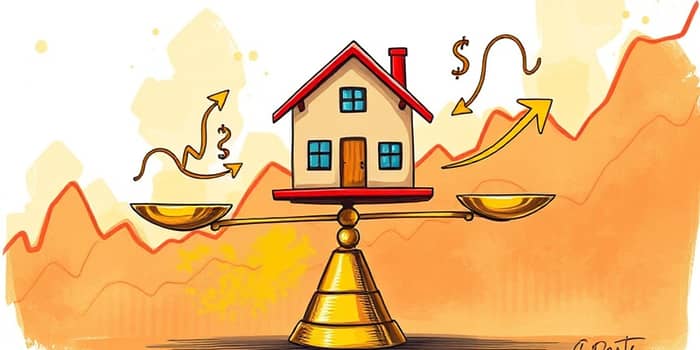Adjustable-rate mortgages (ARMs) offer a unique blend of potential savings and risk, making them an attractive option for certain homeowners and investors. By understanding their mechanics, weighing pros and cons, and adopting sound planning strategies, borrowers can determine if an ARM aligns with their financial roadmap.
Understanding the Basics of Adjustable-Rate Mortgages
Unlike fixed-rate loans, ARMs feature variable interest rate adjustments after an initial fixed period. This period typically ranges from one to ten years, during which the rate remains stable. Once it ends, the rate fluctuates according to a specific market index, such as the Federal Reserve cost of funds index.
ARMs incorporate three types of rate caps to protect borrowers:
Understanding these caps is crucial for evaluating your exposure to rising rates and planning accordingly.
The Advantages of Choosing an ARM
ARMs can deliver significant benefits for those prepared to navigate their dynamic nature. Key advantages include:
- Lower initial interest rates compared to 30-year fixed mortgages, reducing early monthly payments.
- Opportunity to redirect savings toward principal paydown, investments, or home improvements.
- Potential to benefit from falling market rates without refinancing.
The Risks and Downsides to Keep in Mind
While enticing, ARMs carry inherent uncertainties. Borrowers must be ready to manage:
- Payment volatility after the fixed period, with rates that could increase substantially.
- Budgeting challenges due to unpredictable future payments.
- Complex loan terms involving indexes, margins, and caps that require careful review.
Identifying Candidates for ARMs
Not every homeowner should choose an ARM. Ideal candidates often share these characteristics:
- Short-term homeowners planning to move or sell within 3–5 years before major adjustments.
- Real estate investors and house flippers seeking financial flexibility during renovation periods.
- Borrowers with predictable income growth who can absorb future rate hikes.
Market Trends and Strategic Timing
ARMs regained popularity in high-rate environments like 2022–2024, when the gap between initial ARM rates and 30-year fixed rates widened. Historically, they played a notable role before the Great Recession, reminding borrowers to account for economic cycles and market sentiment.
Those who anticipate falling rates may prefer ARMs to capture future savings without the cost of refinancing. However, timing the market remains challenging, so comprehensive scenario analysis is essential.
Risk Management Strategies
Effective planning ensures that ARMs remain an asset, not a liability. Start by mastering the details of each cap and calculating a comprehensive worst-case scenario planning model. Build reserves to cover potential payment jumps and establish clear refinancing or exit strategies before adjustments occur.
Consulting with a mortgage advisor can clarify complex terms and help you lock in favorable rates or switch loans at the right moment. Regularly review your financial goals and market conditions to stay ahead of rate shifts.
Final Thoughts and Actionable Steps
Adjustable-rate mortgages offer a powerful tool for those who understand their fluid nature and prepare accordingly. By combining careful analysis, prudent budgeting, and empowered and informed mortgage decision-making, borrowers can leverage ARMs to achieve short-term savings and long-term success.
Begin by comparing fixed and adjustable scenarios, calculate potential payment increases, and assess your risk tolerance. With a clear plan and expert guidance, an ARM can align perfectly with your evolving financial journey.
References
- https://www.investopedia.com/terms/a/arm.asp
- https://www.rocketmortgage.com/learn/adjustable-rate-mortgage-pros-and-cons
- https://www.findlaw.com/realestate/mortgages-equity-loans/adjustable-rate-mortgage-risks.html
- https://www.sccu.com/articles/home-mortgage/adjustable-rate-mortgages-how-they-work-pros-cons
- https://www.businessinsider.com/personal-finance/mortgages/arm-rates-today
- https://journalistsresource.org/economics/adjustable-rate-mortgages-explainer/
- https://sites.lsa.umich.edu/mje/2024/01/31/the-risks-associated-with-adjustable-rate-mortgages/










